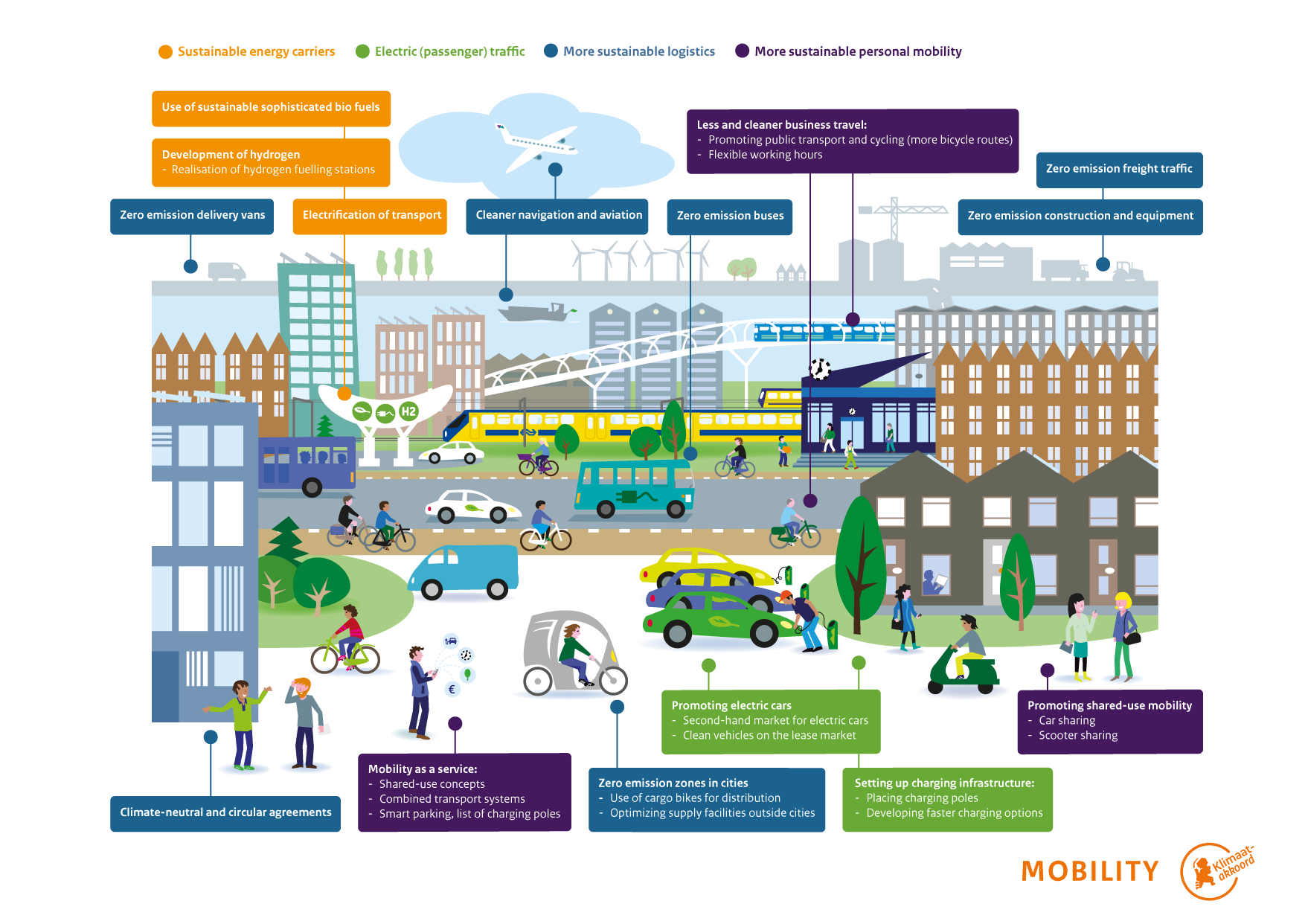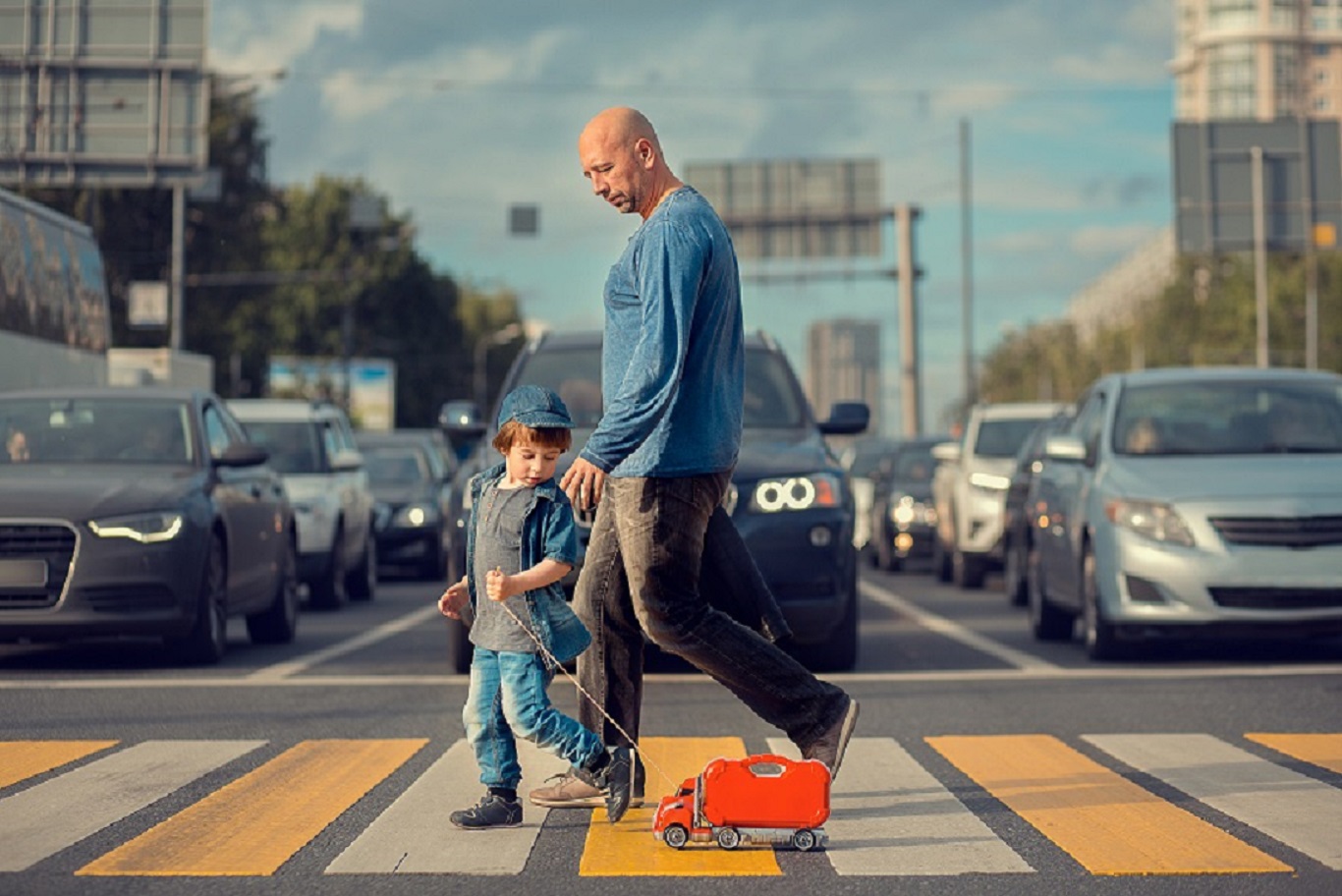The 2019 Climate Agreement formulates an ambitious vision to achieve "carefree mobility, for everything and everyone in 2050, without emissions, accessible for young and old, rich and poor, able-bodied and disabled. Affordable, safe, comfortable, easy and healthy. " This requires an integrated approach to the mobility system, with all modalities and infrastructural facilities, as shown in the image below.

To achieve the objectives, an approach is chosen along three lines, in which technology and data play an important role:
- reducing the number of kilometers traveled in passenger and freight transport, for example by focusing on behavioral change (taxes/subsidies), better logistics planning, or through spatial measures.
- changing the demand for sustainable and more efficient alternatives, such as cycling/walking, public transport or shared mobility.
- making vehicles and infrastructure more sustainable through cleaner fuels or smarter use of materials.
The report "Social impact of Smart and Sustainable urbanization" describes solutions to reduce the impact of mobility on quality of life, health and the use of space. The observation that cars in the Netherlands are parked on average 95% of the time in a parking lot and thus take up approximately 214,890 square kilometers of valuable space, while 80% of the journeys take place within a radius of 0 to 25 kilometers, confirms that we need smarter and more sustainable solutions. Fortunately, the availability of alternatives, supported by technological improvements and digital platforms, is already steadily increasing.
The e-bike is also growing in popularity. Partly due to the good cycling infrastructure and the increased range of the e-bike, it is becoming an increasingly attractive alternative to car use. This increase in the number of cyclists is a positive development for health and CO2 emissions, but it also presents new challenges. Last year, for the first time in years, there were more traffic accidents than the year before. And cyclists are increasingly involved in this. The variety of vehicles, the traffic on bicycle paths and the difference in speed means that we have to look differently at how we develop safe (cycling) infrastructure.
There is also a major challenge for freight and freight transport. The Top Sector Logistics assumes that the current logistics efficiency is around 45%, largely due to the fact that lorries or vans are not fully occupied, or sometimes even completely empty. With smart measures, logistics efficiency can be increased, resulting in significantly fewer kilometers to be driven.
In the coming years, the Dutch infrastructure will undergo a major overhaul. Construction and maintenance of roads, tunnels and bridges will lead to diversions, traffic nuisance and delays. It will be a major challenge for road authorities and infrastructure parties to keep the Netherlands accessible. Up-to-date (digital) traffic information about blockages is essential in order to be able to properly inform users and possibly redirect them.
WeCity, in collaboration with its partners, offers various solutions to make smarter use of data, sensors and innovative solutions. Do you want to know more? Then contact us.


